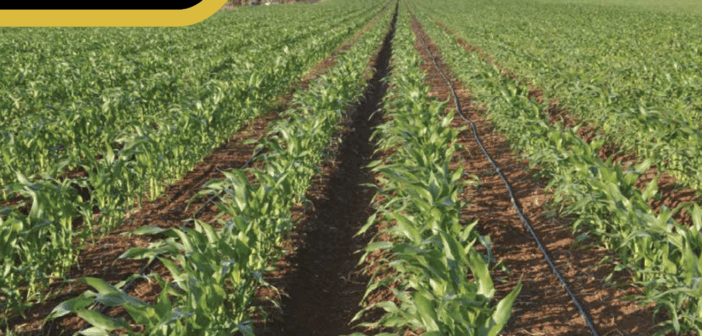By Derek Mutiso
Charting a Course for Growth in Kenya’s Agricultural Sector
Charting a Course for Growth in Kenya’s Agricultural Sector
For over a century, agriculture has stood tall amongst the linchpins of Kenya’s economy, constituting nearly a third of the nation’s GDP and providing livelihoods for approximately 70 percent of its rural populace – this is despite its heavy reliance on age-old farming methods. Within this expansive sector, horticulture has emerged as a formidable driving force, catapulting Kenyan agricultural products onto the global market. Horticultural exports to both the European and Chinese markets have now eclipsed the combined value of coffee and tea exports, exemplifying the sub-sector’s pivotal role in the economy.
With recent strides including the endorsement of the Economic Partnership Agreement with the European Union and the incorporation of high-demand products like avocados, Kenya’s horticulture industry is poised for even greater success. The United Nations Food and Agriculture Organization’s 2021 report revealed that Kenya is now the world’s sixth-largest avocado producer.
The planted area sprawls across nearly 26,000 hectares, yielding an astounding 417,000 metric tons. This surge in avocado farming signifies more than just a statistic; it is a testament to Kenya’s potential for expansion and diversification within the agricultural domain. Despite our apparent agricultural potential, in the first quarter of 2023 alone, Kenya witnessed a startling 58.4 percent surge in its food import bill. This mounting fiscal strain raises legitimate concerns about Kenya’s trajectory, teetering perilously close to the precipice of becoming a net food importer.
Despite valiant efforts to augment domestic food production, Kenya still grapples with formidable challenges, from erratic rain patterns to the confines of small farm sizes, and the soaring specter of high production costs. These obstacles collectively impede progress in weaning the nation off its heavy reliance on food imports.
Beyond Kenya’s borders, Africa too, grapples with a paradox – According to the United Nations Conference on Trade and Development, “Africa imported about 85% of its food (2016-2018) from outside the continent,” amounting to $35bn and is expected to reach $110bn by 2025. Yet, the continent boasts 65 percent of the world’s untamed arable land, an abundance of fresh water, and a climate blessed with over 300 days of sunshine annually. More than 60 percent of Africa’s workforce tills the land, underscoring agriculture’s pivotal role in the continent’s economic narrative.
In rural settings, households typically engage in a range of activities to support themselves. However, it is the progress in agriculture that has proven to be the principal driver in significantly reducing poverty across these regions. As farmers experience an increase in their earnings, they play a vital role in invigorating the local economy. Their heightened spending leads to job creation widens opportunities, and augments the demand for agricultural goods. This interplay showcases the transformative impact of agricultural development on both individual livelihoods and broader economic prosperity in rural areas.
Modern farming, propelled by innovations like drought resistance, crop safeguarding, and enhanced yield methods, holds considerable potential to foster employment, generate wealth, and enhance both health and nutrition across the continent. Consequently, agriculture stands as the foundation of Africa’s economic metamorphosis.
Now is the time to cultivate a fresh vision for African agriculture, one that promises abundant rewards in the future. Achieving this transformation may be swifter than anticipated if we execute it effectively. Africa’s irrefutable destiny is to supply sustenance to the global community, not merely to rely on others for its own.
- Enhance the Agribusiness environment
The Kenyan government can substantially enhance the agribusiness environment through a series of strategic policy reforms. Firstly, land tenure reform is imperative, involving transparent land registration systems, protection of property rights, and educational initiatives for farmers to secure land tenure. Input subsidies, such as discounted or free agricultural inputs, can lower production costs and stimulate productivity, requiring efficient distribution and monitoring.
Encouraging local production and processing through tax incentives, procurement preferences, and technical support can reduce import dependence and create employment. Access to finance is pivotal, necessitating the development of agricultural-focused financial products and incentives for lending institutions to serve agribusinesses.
Participation in regional integration and trade agreements, like the East African Community (EAC) and African Continental Free Trade Area (AfCFTA), opens doors to new markets. The government’s role includes harmonizing regulations, reducing trade barriers, and promoting cross-border agricultural investments.
- Value Enhancement
Value addition in agriculture involves transforming a raw product into a more valuable state. This can involve various steps, which include; processing, packaging, and labeling, to create a product that meets consumer preferences. In Kenya, most agricultural commodities are marketed in their raw form. Farmers miss out on opportunities for higher earnings and employment generation.
Challenges faced by Kenya’s agro-processing industry include high operational costs due to expensive fuel and spare parts and limited availability of suitable processing machines. Despite these challenges, agro-processing has immense potential for increasing income and improving food security by establishing small-scale agro-processing enterprises.
Encouraging farmers to vertically integrate their operations and engage in value addition can lead to increased profitability. Value-added products tend to have higher profit margins compared to basic commodities. They also enjoy longer shelf lives, making them more marketable. Establishing market research teams and adopting low-cost technologies for processing can further enhance value addition in the agricultural sector. Overall, value addition offers a pathway to increased income and sustainable agricultural enterprises in Kenya.
In 2022, The World Bank approved a $250 million credit for the National Agricultural Value Chain Development Project (NAVCDP) in Kenya. This initiative aimed to enhance market participation and value addition for half a million small-scale farmers across 26 counties.
- Boosting agricultural funding sources
Expanding agricultural financing is another crucial step towards boosting the agricultural sector in Kenya. This involves a multi-faceted approach that includes both private investment and commercial bank lending, as well as specialized financial services for small and medium-sized enterprises (SMEs) that operate in the agricultural space.
Private Investment and Commercial Bank Lending:
Encouraging private investment in agriculture is essential for injecting capital into the sector. This can be achieved through initiatives like risk-sharing facilities, which mitigate some of the inherent risks associated with agricultural ventures. By partnering with private investors, the government can mobilize substantial resources for agricultural development.
Non-Bank SME Support
SMEs play a vital role in the agricultural value chain, from input suppliers to agro-processors and distributors. Providing specialized financial services tailored to their needs is crucial for their growth and sustainability. Non-bank financial institutions can offer flexible financing options, such as tailored loan products and microfinance services, to address the specific requirements of agricultural SMEs.
Capacity Building
Strengthening the financial acumen and management skills of individuals and entities involved in agriculture is pivotal. Capacity-building initiatives can encompass training programs, workshops, and educational resources focused on financial literacy, investment planning, and risk management. This equips stakeholders with the knowledge and skills necessary to make informed financial decisions and manage resources effectively.
By expanding agricultural financing through these avenues, Kenya can stimulate investment, foster entrepreneurship, and drive innovation within the agricultural sector.
- Embracing Modern Technology
It is necessary to introduce and adopt advanced farming techniques that will ultimately lead to higher levels of productivity. Positive change doesn’t hinge on just one innovation. It encompasses a wide range of cutting-edge technologies, each with the potential to redefine how farming is approached. One such innovation is precision farming which uses data and technology to make farming practices more accurate and efficient.
By customizing actions like planting, irrigation, and fertilizer use to the specific conditions of a field, farmers can make the most of their resources and get higher yields. Kenyans also need to bring modern machinery and tools into farming operations. This includes tractors, harvesters, and automated systems for various tasks. These machines can significantly reduce the amount of manual labor needed for farming, especially on larger plots of land, which in turn leads to much higher productivity.
Irrigation is another key focus area. By promoting modern irrigation methods, and advanced systems that can efficiently deliver water to crops, farmers can ensure a steady and sufficient supply of moisture. This is particularly valuable in areas where rainfall is unpredictable, allowing farmers to maintain healthy crops and good yields all season long.
The path forward for Kenyan agriculture is clear and promising. The strides made in horticulture, coupled with recent milestones, signal a sector poised for expansion and global recognition. However, challenges such as a mounting food import bill and the constraints of small-scale farming must be addressed to secure a self-reliant future. Along with other reforms, the multifaceted approach outlined, encompassing policy reforms, value addition, financial empowerment, and technological integration, forms the bedrock of this transformative journey. Through these concerted efforts, agriculture in Kenya can not only meet local demands but also thrive on the global stage. The destiny of Africa’s agriculture lies in its own hands, ready to nourish the world and shape a future of enduring promise and abundance.
The author is a business writer and Project Coordinator, Omeriye Foundation
Email: [email protected]




